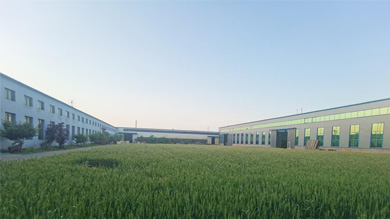វិច្ឆិកា . 13, 2024 22:43 Back to list
actuated ball valve
The Actuated Ball Valve Enhancing Control in Fluid Systems
The actuated ball valve is an essential component in modern fluid control systems, designed to provide effective regulation of flow in a wide range of applications. Combining the robust features of the traditional ball valve with sophisticated actuation technologies, this valve type stands out for its reliability and precision. In this article, we will delve into the structure, working principle, advantages, and applications of actuated ball valves.
Structure and Design
An actuated ball valve consists of a spherical element (the ball) that features a hole or port through its center. This ball rotates within the valve body, enabling or blocking the flow of fluid based on its orientation. The actuating mechanism, which can be pneumatic, electric, or hydraulic, operates the valve's stem, allowing the ball to turn a quarter of a turn to either allow or stop the flow.
The design of an actuated ball valve often includes several critical components
1. Ball The core component that provides the sealing function. The ball surface is typically machined for precision, allowing for a tight closure when the valve is in the off position.
2. Valve Body Made from materials such as stainless steel, cast iron, or plastic, the body houses the ball and provides the connection points for the inlet and outlet pipes.
3. Actuator This is the device responsible for delivering the rotational movement to open or close the valve. Actuators can be powered by electricity (electric actuators), air (pneumatic actuators), or hydraulic pressure, depending on the application requirements.
4. Stem The stem connects the ball to the actuator, translating the actuator's linear or rotary motion into the rotational movement of the ball.
5. Seals and Packing These components ensure that there are no leaks when the valve is closed. They are crucial for maintaining the integrity of the system, particularly in high-pressure applications.
Working Principle
The operation of an actuated ball valve is relatively straightforward. When the actuator receives a signal—be it manual, based on a control system, or a sensor reading—it transforms that signal into mechanical motion. This motion turns the ball within the valve body. When the ball’s port is aligned with the flow path, the valve is in the open position, allowing fluid to pass through. Conversely, when the actuator turns the ball a quarter turn, the port is perpendicular to the flow, effectively shutting off the flow.
One of the significant advantages of this design is its speed. Actuated ball valves can open or close in mere seconds, making them ideal for operations requiring quick adjustments to flow conditions.
actuated ball valve

Advantages of Actuated Ball Valves
Actuated ball valves bring a host of advantages to various industries
1. Precision Control The accurate opening and closing mechanisms allow for precise flow control, making them suitable for processes where exact flow rates are crucial.
2. Reduced Labor Costs Automation via actuators minimizes the need for manual labor, leading to reduced operational costs and increased safety.
3. Durability and Reliability Manufactured from resilient materials, actuated ball valves exhibit excellent resistance to wear, corrosion, and temperature extremes, ensuring a long service life.
4. Versatile Applications These valves are utilized across multiple sectors, including oil and gas, water treatment, HVAC systems, and chemical processing, demonstrating their versatility.
5. Safety Features Many actuated ball valves are designed with fail-safe options, ensuring that in the event of a power loss or malfunction, they default to a safe position, either fully open or closed.
Applications
Due to their robust nature and versatile functionality, actuated ball valves find applications in various industries
- Oil and Gas Used in pipelines for both upstream and downstream operations. - Water Treatment Vital for the control of flow in treatment plants. - Food and Beverage Ensures sanitary and efficient handling of fluids. - Chemical Manufacturing Critical in processes where precise control over corrosive fluids is necessary.
Conclusion
The actuated ball valve is a transformative device enhancing fluid control across numerous sectors. With their robust design, swift operation, and ability to be automated, these valves are indispensable in streamlining processes and improving operational efficiency. As technology advances, the evolution of actuated ball valves will continue to shape the future of fluid control systems, making industries safer and more efficient.
Share
-
Reliable Wafer Type Butterfly Valves for Every IndustryNewsJul.25,2025
-
Reliable Flow Control Begins with the Right Ball Check ValveNewsJul.25,2025
-
Precision Flow Control Starts with Quality ValvesNewsJul.25,2025
-
Industrial Flow Control ReliabilityNewsJul.25,2025
-
Engineered for Efficiency Gate Valves That Power Industrial PerformanceNewsJul.25,2025
-
Empowering Infrastructure Through Quality ManufacturingNewsJul.25,2025